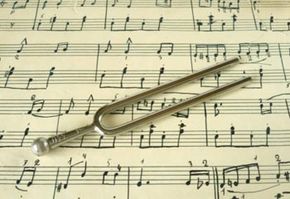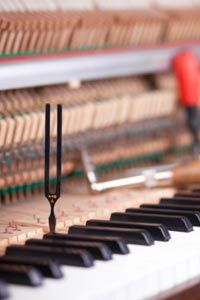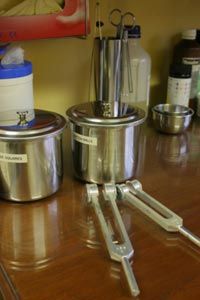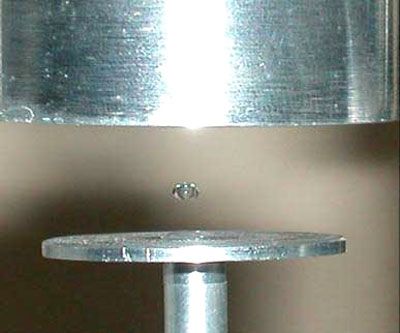The choir comes to a hush as the choirmaster steps into the room. "All right, let's tune," she declares to the assembled singers. Producing a two-pronged metal tool from her pocket, she strikes it against her knee. After a shrill whine, it begins to emanate a mysterious, angelic hum. Resting the base of the device against a wooden desk, the hum becomes louder. Listening intently to the small, singing piece of metal, the singers adjust their voices accordingly.
Pianos lose their tuning, guitars fall out of key -- even church organs need to be tuned every now and then. For centuries, the only sure-fire way to tell if an instrument was in tune was to use a tuning fork: A two-pronged, all-metal device the length of a butter knife. Simple to make and easy to use, tuning forks guaranteed 100 percent pitch accuracy. In antique shops today, you can find 300-year-old tuning forks that emit notes just as clear and crisp as the day they were made.
Advertisement
The device was first invented in 1711 by John Shore, a trumpet player working for the British Crown. In concerts, Shore jokingly referred to his invention as a "pitch fork." Shore's device quickly became the must-have tool of musicians around the world. In portraits, choirmasters posed while brandishing a tuning fork. Young musicians were given gold-plated tuning forks upon successful completion of a conservatory exam. Today, the $3.5-billion Yamaha Corporation has a trio of tuning forks as their logo. Tuning forks were even behind some of telephone inventor Alexander Graham Bell's earliest experiments. In 1876, Bell was able to use a battery, an electrified tuning fork and a cup of acidic water to transmit sound over an electric wire for the first time.
"Playing" a tuning fork is relatively easy: Taking care not to hold it by the prongs, you slap it against something hard like a tabletop -- or even the bottom of your shoe -- and then listen as it rings for about 5 seconds. Hit it hard or hit it soft, the note is always the same. It seems almost magical.
Read on to find out how a hunk of metal makes music.





